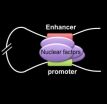(Press-News.org) An international research team led by the University of Colorado Boulder has generated the first laser-like beams of X-rays from a tabletop device, paving the way for major advances in many fields including medicine, biology and nanotechnology development.
For half a century, scientists have been trying to figure out how to build a cost-effective and reasonably sized X-ray laser that could, among other things, provide super-high-resolution imaging, according to Henry Kapteyn, a CU-Boulder physics professor and fellow at JILA, a joint institute of CU-Boulder and the National Institute of Standards and Technology. Such a device also could be used by scientists to peer into a single cell or chemical reaction to gain a better understanding of the nanoworld.
Most of today's X-ray lasers require so much power that they rely on facilities the size of football stadiums or larger, making their use impractical. To avoid the need for a large energy source to power an X-ray laser, the CU-Boulder researchers have created a tabletop device that uses atoms in a gas to efficiently combine more than 5,000 low-energy mid-infrared laser photons to generate each high-energy X-ray photon, said Margaret Murnane, a CU-Boulder physics professor and JILA fellow who is co-leading the research efforts.
"Because X-ray wavelengths are 1,000 times shorter than visible light and they penetrate materials, these coherent X-ray beams promise revolutionary new capabilities for understanding and controlling how the nanoworld works on its fundamental time and length scales," Murnane said. "Understanding the nanoworld is needed to design and optimize next-generation electronics, data and energy storage devices and medical diagnostics."
The findings will appear June 8 in the journal Science.
The tabletop device -- an X-ray tube in the soft X-ray region -- produces a bright, directed beam of X-rays by ensuring that all of the atoms in a multi-atmosphere pressure gas emit X-rays, according to Kapteyn.
"As an added advantage, the X-rays emerge as very short bursts of light that can capture the fastest processes in our physical world, including imaging the motions of electrons," Kapteyn said.
Laser beams, which are visible light, represent one of the best ways to concentrate energy and have been a huge benefit to society by enabling the Internet, DVD players, laser surgery and a host of other uses.
"However, the same revolution that happened for visible light sources that made it possible to create laser-like beams of light for widespread use instead of multidirectional light from a light bulb, is only now happening for X-rays," Kapteyn said.
###Co-authors on the paper were Tenio Popmintchev, Ming-Chang Chen, Dimitar Popmintchev, Paul Arpin, Susannah Brown, Andreas Becker and Agnieszka Jaron-Becker of CU-Boulder; Skirmantas Alisauskas, Giedrius Andriukaitis, Tadas Balciunas, Oliver Mucke, Audrius Pugzlys and Andrius Baltuska of the Vienna University of Technology in Vienna; Bonggu Shim, Samuel E. Schrauth and Alexander Gaeta of Cornell University; and Carlos Hernandez-Garcia and Luis Plaja of the Universidad de Salamanca in Salamanca, Spain.
CU-Boulder physicists use ultrafast lasers to create first tabletop X-ray device
2012-06-08
ELSE PRESS RELEASES FROM THIS DATE:
New brain target for appetite control identified
2012-06-08
New York, NY (June 7, 2012) — Researchers at Columbia University Medical Center (CUMC) have identified a brain receptor that appears to play a central role in regulating appetite. The findings, published today in the online edition of Cell, could lead to new drugs for preventing or treating obesity.
"We've identified a receptor that is intimately involved in regulating food intake," said study leader Domenico Accili, MD, professor of Medicine at CUMC. "What is especially encouraging is that this receptor is belongs to a class of receptors that turn out to be good targets ...
New twist on old chemical process could boost energy efficiency
2012-06-08
Chemical reactions on the surface of metal oxides, such as titanium dioxide and zinc oxide, are important for applications such as solar cells that convert the sun's energy to electricity. Now University of Washington scientists have found that a previously unappreciated aspect of those reactions could be key in developing more efficient energy systems.
Such systems could include, for example, solar cells that would produce more electricity from the sun's rays, or hydrogen fuel cells efficient enough for use in automobiles, said James Mayer, a UW chemistry professor.
"As ...
Parasitic plants 'steal' genes from their hosts
2012-06-08
New research published today in BioMed Central's open access journal BMC Genomics reveals that the Malaysian parasitic plant Rafflesia cantleyi, with its 50cm diameter flowers, has 'stolen' genes from its host Tetrastigma rafflesiae. Analysis of these genes shows that their functions range from respiration to metabolism, and that some of them have even replaced the parasites own gene activity.
Vertical gene transfer is that between parents and their offspring, while horizontal gene transfer is the movement of genes between two different organisms. Bacteria use horizontal ...
Engineered robot interacts with live fish
2012-06-08
A bioinspired robot has provided the first experimental evidence that live zebrafish can be influenced by engineered robots.
Results published today, 8 June, in IOP Publishing's journal Bioinspiration and Biomimetics, provide a stepping stone on the path to using autonomous robots in an open environment to monitor and control fish behaviour.
In the future, water-based robots could potentially contribute to the protection of endangered animals and the control of pest species.
The robot, created by researchers from Polytechnic Institute of New York University and ...
Manipulating chromatin loops to regulate genes may offer future treatments for blood diseases
2012-06-08
In exploring how proteins interact with crucial DNA sequences to regulate gene activity, researchers have shed light on key biological events that may eventually be manipulated to provide new disease treatments.
Within a cell's nucleus, regulatory elements in DNA called promoters and enhancers communicate with each other in carrying out gene activity, often over large genomic distances, hundreds of thousands of chemical bases apart from each other in chromosomes. As these elements physically contact each other, the intervening DNA sequences bend into loops made of chromatin ...
Immune system 'circuitry' that kills malaria in mosquitoes identified
2012-06-08
Researchers at the Johns Hopkins Malaria Research Institute have, for the first time, determined the function of a series proteins within the mosquito that transduce a signal that enables the mosquito to fight off infection from the parasite that causes malaria in humans. Together, these proteins are known as immune deficiency (Imd) pathway signal transducing factors, are analogous to an electrical circuit. As each factor is switched on or off it triggers or inhibits the next, finally leading to the launch of an immune response against the malaria parasite. The study was ...
Pre-existing problems
2012-06-08
In a critical step that may lead to more effective HIV treatments, Harvard scientists have found that, in a small number of HIV patients, pre-existing mutations in the virus can cause it to develop resistance to the drugs used to slow the progression of the disease.
The finding is particularly important because, while researchers have long known HIV can develop resistance to some drugs, it wasn't understood whether the virus relied on pre-existing mutations to develop the resistance, or if it has to wait for those mutations to occur. By shedding new light on how resistance ...
Should spinal manipulation for neck pain be abandoned?
2012-06-08
The effectiveness of spinal manipulation divides medical opinion. On bmj.com today, experts debate whether spinal manipulation for neck pain should be abandoned.
Spinal manipulation is a technique that involves the application of various types of thrusts to the lumbar spine (lower back) or cervical spine (neck) to reduce back pain, neck pain and other musculoskeletal conditions.
Neil O'Connell and colleagues argue that cervical spine manipulation "may carry the potential for serious neurovascular complications" and that the technique is "unnecessary and inadvisable." ...
Patients suffering from pre-diabetes at potential future risk of stroke
2012-06-08
Millions of people suffering from pre-diabetes may be at a higher risk of stroke, a study published on bmj.com today suggests.
Pre-diabetes is characterised by higher than normal blood glucose levels that, if left untreated, develops into type 2 diabetes. The scale of the problem is enormous and growing, with an estimated 79 million people in the US and 7 million people in the UK affected.
People with pre-diabetes also harbour the same vascular risk factors as people with type 2 diabetes, such as high blood pressure, high cholesterol and obesity, but its effect on ...
By adding VSL#3 probiotic to traditional therapies UC patients can improve remission rates
2012-06-08
GAITHERSBURG, MD, June 7 – As one of the few probiotics with medical food designation for specific illnesses, VSL#3® has been the subject of a collection of more than 80 studies that have demonstrated its use in the dietary management of IBS, ulcerative colitis, and an ileal pouch. Ulcerative colitis patients, in particular, have been shown to benefit from adding VSL#3 medical food to their prescription drug regimen. One particular study shows that the combination of VSL#3 and traditional drug therapy can improve remission rates over drug therapy alone by 10 to 17 percent, ...


